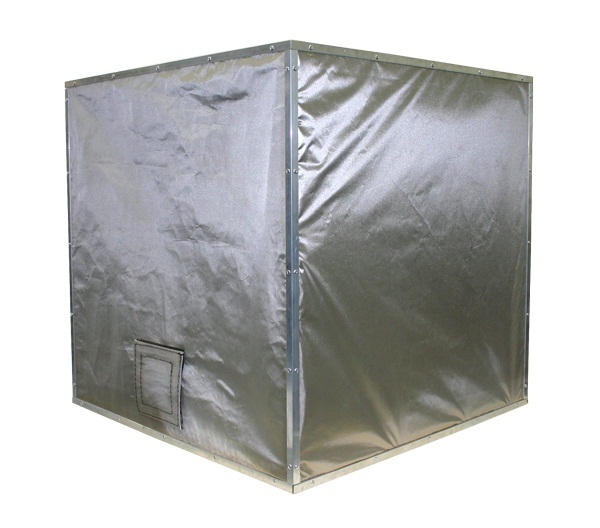In an more and more connected environment, the importance of safeguarding our electronic devices from EM interference is paramount. Faraday enclosures have emerged as a crucial tool in this arena, serving as a shield against outside electric fields and guaranteeing the protection of sensitive equipment. However, in spite of their widespread use and effectiveness, many individuals remain unaware of the limitations of Faraday cages and the important features to consider when purchasing one.
Understanding how a Faraday cage functions is essential before making a purchase. Not all Faraday cages are made equal, and factors such as the substances used, size, and intended application have a major role in their effectiveness. This article will delve into the intricate world of Faraday cages, offering insights on everything from material selection to the practicalities of DIY versus pre-made options, assisting readers make informed decisions customized to their particular needs.
Key Features to Evaluate in a Faraday Cage
As you considering a Faraday cage, the primary aspect to assess is the substance used in its build. The efficacy of a Faraday cage is largely influenced by its ability to shield against electromagnetic fields, which is influenced by the type of metal utilized. Substances like copper are widely favored due to their outstanding conductivity and shielding properties. It is vital to confirm that the metal is adequate in thickness to provide sufficient protection, as thinner materials may not provide the degree of shielding required for certain applications.
An additional crucial aspect to evaluate is the structure of the cage in its entirety. A properly constructed Faraday cage should have zero gaps or seams that could enable electromagnetic waves to infiltrate. Look for cages with a robust structure or those made from a mesh with a small enough weave to block various frequencies effectively. The design should also allow easy access to your stored items while upholding the integrity of the shielding, ensuring that it serves its function without sacrificing security.

Finally, think about the size and portability of the Faraday cage. Based on your needs, you may require a small option for personal electronics or a larger fixed structure for home or vehicle use. It is important to choose a size that not only accommodates your storage needs but also allows for practical use in your specific environment. Evaluating these key features will help ensure that you choose a Faraday cage that fulfills your protection needs efficiently.
Material Matters: Best Metals for Effective Faraday Cages
In the context of constructing a Faraday cage, the decision of material is crucial for ensuring effective shielding against electromagnetic interference. Cu is often viewed as one of the best metals for this function due to its superb conductivity and ability to block a broad spectrum of frequencies. Its performance is often unmatched when it comes to dissipating electromagnetic energy, providing dependable protection for vulnerable electronics. Additionally, copper's tolerance to corrosion makes it a long-lasting choice for extended use.
Aluminium is another popular option, favored for its light properties and affordability. While important link may not offer the same level of conductivity as copper, aluminum still delivers effective shielding, especially for a range of RF signals. Its ease of fabrication allows for flexible designs, enabling users to create both portable and permanent structures. Moreover, https://casinokeeda.com/members/faradaycages648/activity/790135/ is more attainable and generally less costly, making it a practical choice for those seeking a combination between cost and efficiency.
Stainless steel, particularly in its solid form, presents a strong alternative, especially in applications where toughness and strength are priorities. While steel is not as conductive as copper or aluminum, it can effectively block lower frequency electromagnetic waves. Its robustness makes it suitable for larger installations where physical safety is also a concern. Understanding the exact requirements of your application will help determine which metal will provide the optimal combination of shielding effectiveness and practicality in your Faraday cage design.
Shielding Efficacy: Ways to Ensure Optimal Safety
To achieve maximum safety with a Faraday enclosure, it is essential to grasp its construction and materials. A sturdy and unbroken metal shield is the key factor in effectively blocking electromagnetic fields. Gaps or openings in the cage can greatly diminish its shielding capabilities, so make sure that the size of the mesh is suitable for the signals you want to protect against. Substances like copper alloy, aluminum, and galvanized steel are commonly used due to their ability to conduct, so selecting a cage made from these metals increases the likelihood of achieving efficient protection.
The size and location of your Faraday cage also play crucial roles in its efficacy. A larger cage will provide more space for your devices, but it should also be properly connected to ground to enhance performance. Grounding is particularly crucial as it can help dissipate any incoming electromagnetic energy. Ensure that the cage is situated away from potential sources of disturbance and is kept in a non-moist area to avoid corrosion, which could compromise its structure over time.
Lastly, it is advisable to regularly test your Faraday enclosure's performance to ensure it is upholding its protective quality. Testing can be done using a signal generator and a radio receiver to look for any leaks in shielding. Monitoring and maintaining your Faraday cage will help you identify any problems early on, ensuring that your devices remain protected. By considering these elements, you can ensure optimal protection efficacy for your devices against EM pulses and other interferences.
